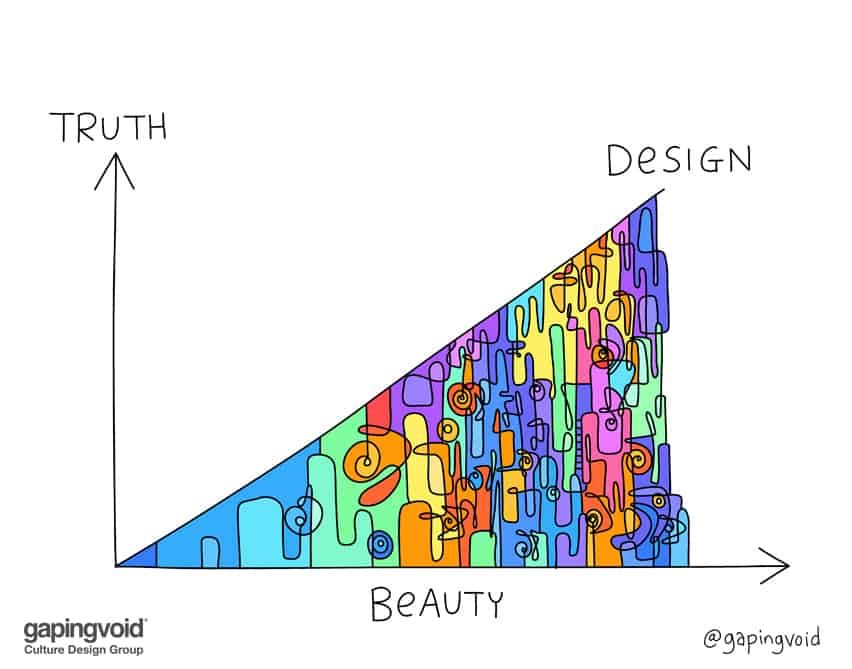
It was a long time after MOO launched that we started calling it a ‘Purpose’ or a ‘North Star’ but it was always there…
My two jobs before founding MOO were with a tech startup and then working for a design company.
Technology and Design.
I enjoyed both but found each world to be polarising in their ideologies. At times I saw them as conflicting: Function vs Form. Inclusive vs Exclusive. Many vs Few. I’m simplifying, obviously, but I was young then and their contrasts struck me.
I loved the world of professional design. Watching great craftspeople work storytelling into something like a font or a building is amazing. However, the industry could be a little snooty, taking itself a little too seriously, thinking only of the client, not the end-user, or (at worst) just of their portfolio.
I also loved the open and inclusive vision of technology. The democratisation of hierarchical systems, the levelling of all playing fields. Software has magically unlocked broad-based, global access to information, transport, commerce, communication, and so on. However, its iconoclastic and impunitive rampage has also demolished some incredibly important and valuable institutions, whose absence allow these new upstarts to tug at the fabric of our society.
When I founded MOO I wanted to bring these two, sometimes conflicting, worlds closer together. To meld their better qualities, making professional design more accessible, by using technology to unlock and demystify design. We articulate this, internally only, as “Great Design for Everyone”. For me this is either finding the best products in a space and looking at ways to make them more accessible to more people. Or, conversely, looking at things that are already popular, but may be poor quality or an eyesore, and using good design principles to make them more desirable: something you may need, but now you actually want.
I’m fascinated with this tension and, although it has been a challenge to always articulate what “Great Design for Everyone” means at MOO (many people here come from one world, and not the other), it informs everything we do, how we think about our industry, our products and our ultimate mission as a business.
by Richard Moross



